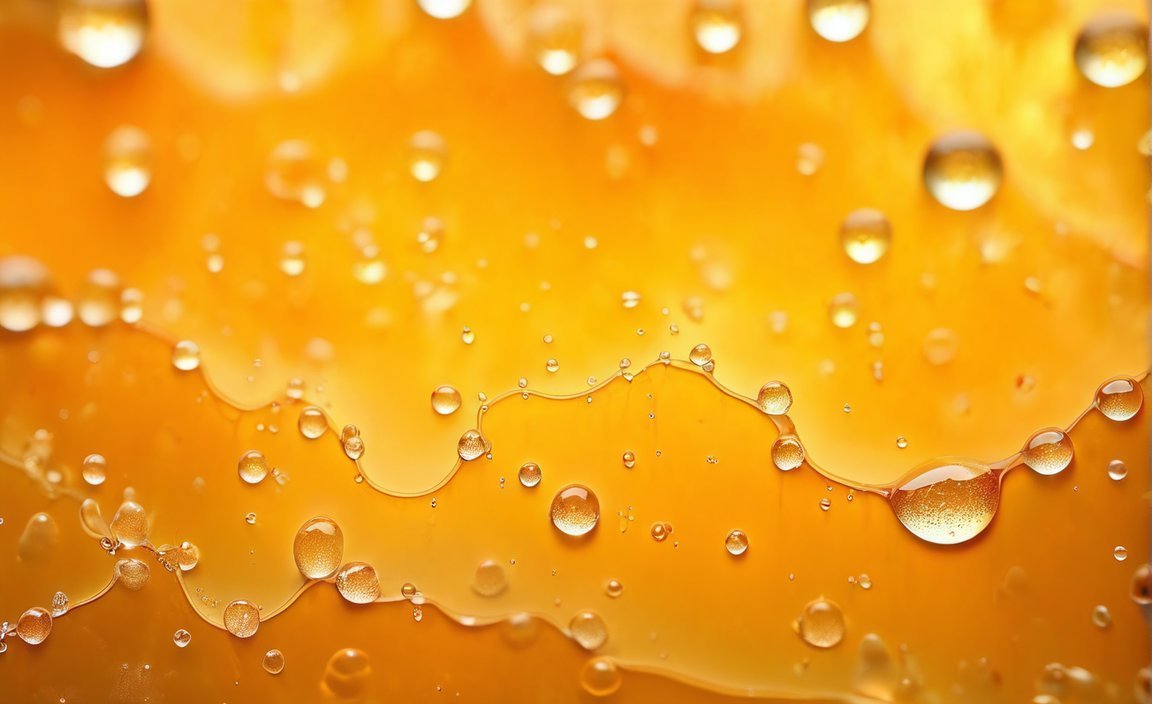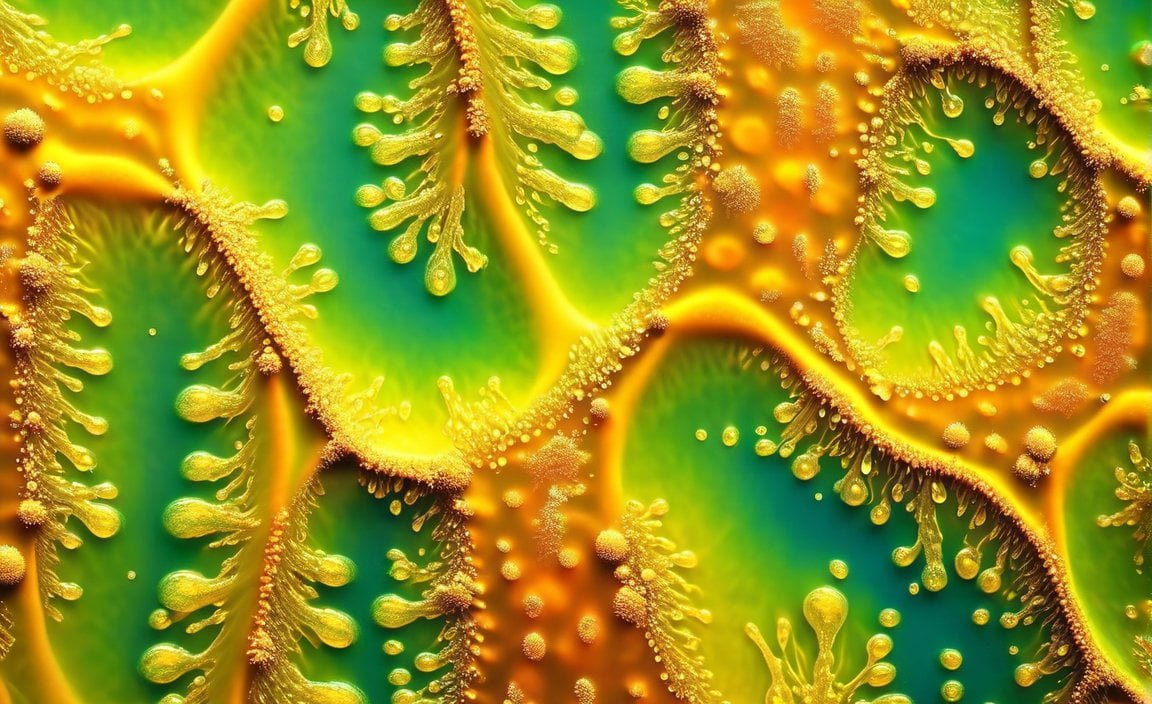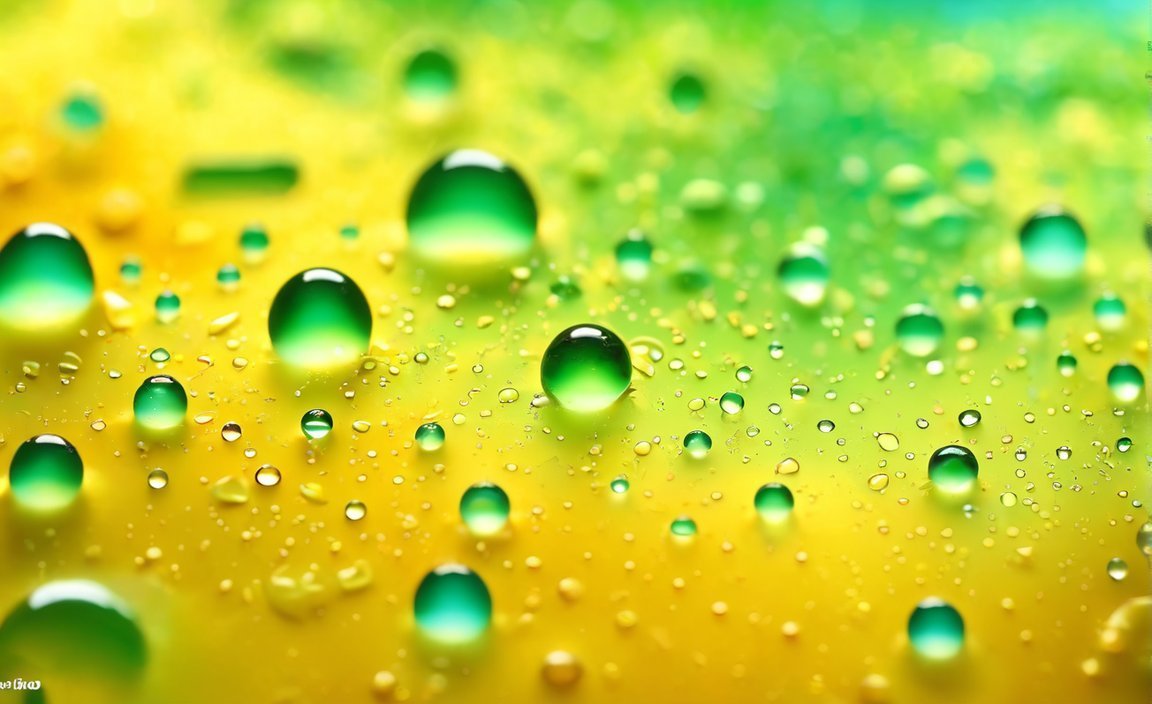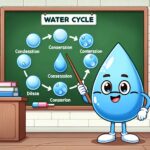Unveiling the Mysteries: 10 Condensation Facts Revealed

If you’ve ever marveled at the dew glistening on a petal or watched as a glass of ice-cold water began to sweat on a warm summer day, then you have witnessed the captivating phenomenon of condensation. This natural process, fueled by the interplay of temperature and moisture, holds a multitude of secrets waiting to be unraveled. In this article, we will embark on a fascinating journey through ten intriguing facts about condensation, shedding light on the science behind this mesmerizing occurrence.
Key Takeaways:
- Condensation is the process of water changing from a gas state to a liquid or crystal state, opposite to evaporation.
- The temperature at which condensation occurs is known as the dew point.
- Condensation is responsible for the formation of clouds.
- All phase changes leading to condensation can be reversed.
- Instruments like hygrometers and psychrometers can measure condensation.
- Condensation finds applications in refrigeration, distillation, and fog harvesting.
- Certain animals and plants rely on condensation as a water source.
- Damp rooms and potential leaks in roofs and pipes can indicate the presence of condensation.
- Condensation plays a crucial role in the water cycle.
- Condensation can happen on any surface when warm air encounters a cold surface.
- Condensation contributes to the formation of water droplets on the outside of cold beverage containers.
- Controlling condensation is possible through strategies like natural ventilation.
- Condensation is both a natural process and a potential issue in different contexts.
10 Interesting Facts About Condensation
Condensation is a fascinating natural phenomenon that occurs when water vapor transforms into a liquid or crystal state. It plays a vital role in various aspects of our lives, from cloud formation to everyday occurrences like droplets forming on cold surfaces. Let’s dive into the intriguing world of condensation and uncover 10 captivating facts:
1. The Dew Point: The Temperature of Transformation
The temperature at which condensation occurs is known as the dew point. It’s when the air becomes saturated with water vapor, leading to the formation of dew, fog, or even frost. Understanding the dew point is essential for meteorologists, as it helps predict weather patterns.
2. Clouds: Condensation in the Sky
When warm air rises and cools at higher altitudes, condensation takes place. As the air molecules cool, water vapor condenses around tiny particles like dust, forming clouds. These clouds can bring rain, snow, or other forms of precipitation.
3. Reverability: Changing States Back and Forth
Condensation is reversible. Just as water vapor turns into liquid or crystal through condensation, it can also transform back into a gas through evaporation. This reversible process plays a crucial role in the continuous cycling of water on Earth.
4. Measuring Instruments: Unveiling the Invisible
Scientists use instruments like hygrometers and psychrometers to measure condensation. These devices provide valuable data on humidity levels and can help us understand the conditions leading to condensation.
5. Practical Applications: From Refrigeration to Fog Harvesting
Condensation finds numerous practical applications in various fields. Refrigeration machines rely on condensation to remove heat and keep our food fresh. Distillation, a purification process, also utilizes condensation. Additionally, fog harvesting collects water droplets from foggy air to address water scarcity issues in some regions.
6. Nature’s Adaptations: Survival Strategies
Some animals and plants have adapted to utilize condensation as a source of water. For instance, desert-dwelling beetles collect water droplets from morning fog on their backs, which then trickle down into their mouths. Certain plants, like the coastal redwood, have specialized leaves that collect water from foggy environments.
7. Indicator of Issues: Dampness and Leaks
Condensation can serve as a clear indicator of potential issues within our living spaces. Damp rooms, moisture on walls, and condensation on windows can be signs of poor ventilation or underlying leaks in roofs and pipes. Identifying and addressing these problems is essential for maintaining a healthy indoor environment.
8. The Water Cycle: Condensation’s Crucial Role
Condensation is a vital part of the water cycle, where water moves between the Earth’s surface, the atmosphere, and back again. Evaporation lifts water vapor into the air, which then condenses to form clouds. These clouds eventually release precipitation, replenishing rivers, lakes, and groundwater.
9. No Surface Exemption: Warm Air and Cold Surfaces
Condensation can occur on any surface when warm air meets a cold surface. Think about the water droplets forming on the outside of your soda can or the glass housing your refreshingly cold drink. It’s an everyday example of this intriguing phenomenon.
10. Controlling Condensation: The Power of Ventilation
Efforts can be made to control condensation, especially in areas like bathrooms and kitchens. Adequate ventilation aids in expelling moisture-rich air, preventing condensation from accumulating on surfaces. Natural ventilation, such as opening windows, can be an effective strategy to manage condensation-related issues.
Condensation reveals itself as both a natural process and a potential concern in various contexts. By unraveling its mysteries and understanding its implications, we deepen our appreciation for this captivating phenomenon that shapes our world.
Sources:
– Eartheclipse: Facts about Evaporation and Condensation
– Kids Kiddle: Condensation Facts for Kids
Here are some interesting links for you to explore:
10 Interesting Facts About Biomes: Discover fascinating insights about different biomes around the world.
10 Interesting Facts About Marine Biology: Dive into the captivating world of marine biology and learn some intriguing facts.
10 Interesting Facts About Marine Life: Explore the wonders of marine life and uncover some amazing facts along the way.
10 Interesting Facts About Parliament House: Delve into the intriguing history and features of Parliament House.
10 Interesting Facts About Parliament House Canberra: Learn fascinating details about the iconic Parliament House in Canberra.
10 Interesting Facts About Ponds: Take a deep dive into the world of ponds and discover some captivating facts.
10 Interesting Facts About Savanna Biome: Embark on a journey to understand the incredible savanna biome and its unique characteristics.
10 Interesting Facts About Sea Creatures: Plunge into the depths of the ocean to uncover intriguing facts about sea creatures.
10 Interesting Facts About Sea Life: Explore the wonders of sea life and learn some fascinating facts along the way.
10 Interesting Facts About Taiga Biome: Venture into the enchanting taiga biome and discover its remarkable features.
Enjoy exploring these captivating topics!
Condensation plays a crucial role in the water cycle, as it is responsible for the formation of clouds and rainfall.
Have you ever wondered how clouds form or where rain comes from? It’s all thanks to condensation, a fascinating process that plays a crucial role in the water cycle. In this article, we will unveil the mysteries behind condensation and explore ten intriguing facts that will leave you amazed.
Key Takeaways:
– Condensation is essential for the formation of clouds and rainfall.
– It is the process of gaseous water vapor turning into liquid water.
– Cloud condensation nuclei (CCN) aid in the formation of clouds.
– Condensation can occur both high in the atmosphere and at ground level.
– The water cycle relies on condensation to recycle Earth’s water.
Now, let’s dive into the ten remarkable facts about condensation:
1. The birth of clouds
Clouds are born through condensation. When water vapor in the atmosphere cools down, it turns into tiny liquid droplets or ice crystals, forming visible clouds. These clouds come in various shapes and sizes and create breathtaking visuals in the sky.
2. From clouds to rain
Condensation is not just about cloud formation; it also leads to rainfall. As condensation continues, the water droplets in clouds grow larger and eventually fall from the sky as rain. This process is an essential part of the water cycle, replenishing Earth’s freshwater sources.
3. The role of condensation nuclei
Cloud condensation nuclei (CCN) are tiny particles such as dust, salt, or pollutants that provide a surface for water vapor to condense onto. Without these nuclei, condensation and cloud formation would be challenging. These particles can come from natural sources or human activities.
4. Condensation occurs at different altitudes
Condensation doesn’t only happen high up in the atmosphere. It can occur closer to the ground as well. In fact, you may have observed condensation on a cold glass or mirror, where warm, moist air meets a cool surface, causing the water vapor to transform into liquid droplets.
5. The opposite of evaporation
Remember how water evaporates when it turns from a liquid to a gaseous state? Well, condensation is the exact opposite. It is the process by which water vapor in the air transforms back into liquid droplets or ice crystals.
6. Condensation reactions
Condensation also has a different meaning in the world of chemistry, where it refers to a reaction where smaller molecules combine to form a larger one while releasing water as a byproduct. This process is commonly seen in the formation of polymers, such as when two amino acids join to create a protein.
7. A key player in the water cycle
Condensation is a vital player in the water cycle, which continuously recycles Earth’s water. As water evaporates from the surface, it rises into the atmosphere and eventually cools down, leading to condensation and the formation of clouds. These clouds, in turn, release precipitation, completing the cycle.
8. Earth’s water distribution
Did you know that the majority of Earth’s water is found in saltwater bodies, such as oceans? Only a small fraction of water is accessible freshwater. This highlights the significance of the water cycle and the role of condensation in maintaining the equilibrium of Earth’s water sources.
9. Various forms of Earth’s water
Water found on the Earth’s surface, such as in rivers and lakes, can cycle rapidly. However, a significant portion of Earth’s water is stored as ice, resides in oceans, or exists as groundwater deep beneath the surface. Condensation helps transport water from these sources back into the atmosphere.
10. Condensation reveals potential issues
Condensation can serve as an indicator of potential issues in living spaces. Excessive condensation on windows, for example, might indicate poor ventilation or the presence of leaks. It’s essential to address these issues to prevent mold growth and maintain a healthy living environment.
By unraveling the mysteries of condensation, we gain a deeper appreciation for its role in the water cycle. From cloud formation to rainfall, condensation is an awe-inspiring process that keeps our planet’s water supply in balance.
Sources:
1. USGS.gov: Condensation and the Water Cycle
2. Britannica: Water cycle | Definition, Steps, Diagram, & Facts
Remember, the next time you marvel at fluffy white clouds or feel the refreshing touch of raindrops, you’ll know that condensation is at the heart of it all.
Supercooling: Unlocking the Enigma
Key Takeaways:
– Supercooling is a fascinating phenomenon that occurs when a liquid remains in a liquid state at a temperature below its freezing point.
– It occurs in the absence of a seed crystal or nucleus around which a crystal structure can form.
– Supercooling is not limited to special techniques or equipment and can occur naturally.
– Animals and plants also utilize supercooling to survive extreme low temperatures in their environments.
– The presence of salt in seawater affects its freezing point, allowing it to remain in the liquid state at lower temperatures.
– Supercooling has applications in various fields, including refrigeration and the formation of glassy water.
Supercooling is a captivating process that defies our understanding of traditional freezing behavior. When a liquid remains in a liquid state at a temperature below its freezing point, it enters the intriguing realm of supercooling. Imagine a liquid teetering on the edge of becoming solid, defying the laws of nature. This phenomenon, which is a type of condensation, has puzzled scientists and intrigued enthusiasts for years.
One of the most fascinating aspects of supercooling is that it can occur naturally, without any special techniques or equipment. When the conditions are just right, a liquid can resist transitioning into a solid state, even at temperatures below its freezing point. This defiance of nature occurs in the absence of a seed crystal or nucleus, which are typically required for the formation of a solid structure.
Not only is supercooling a captivating scientific puzzle, but it also plays a vital role in the survival of certain organisms. Animals and plants have evolved mechanisms to utilize supercooling in order to withstand extreme low temperatures in their environments. By remaining in a liquid state, these organisms can better adapt to their surroundings and increase their chances of survival.
Interestingly, the presence of salt in seawater can influence its freezing point, allowing it to remain in the liquid state at lower temperatures than freshwater. This modification of the freezing point enables marine life to thrive in colder, saltwater environments. It’s a remarkable example of how nature has found intricate ways to overcome the constraints imposed by temperature.
The applications of supercooling extend beyond the realm of nature. Humans have harnessed this phenomenon for various purposes. In the field of refrigeration, supercooling is utilized to create low-temperature environments that preserve food and other perishable items. By carefully controlling the cooling process, it is possible to prevent the formation of unwanted ice crystals and maintain the quality and freshness of the products.
Supercooling also comes into play in the formation of glassy water. Under specific conditions, the liquid state of water can persist even at temperatures below its freezing point, resulting in a glass-like substance. This unique form of water has intriguing properties and has been the subject of extensive research, as scientists aim to understand its fundamental nature and potential applications.
In conclusion, supercooling is a captivating phenomenon that challenges our understanding of freezing behavior. By remaining in a liquid state at temperatures below its freezing point, a liquid enters the intriguing realm of supercooling. This absence of a solid structure formation defies traditional expectations and opens up a world of possibilities. From the survival strategies of organisms to the advancements in refrigeration and the enigma of glassy water, supercooling continues to inspire scientists and ignite our curiosity.
Sources:
– Wikipedia – Supercooling
– Wikipedia – Constitutional supercooling
Unveiling the Mysteries: 10 Condensation Facts Revealed
Condensation is a fascinating natural process that has various applications in our everyday lives, including air conditioning, refrigeration, and the production of distilled water. In this article, we will explore 10 intriguing facts about condensation that will leave you amazed. So, let’s dive in!
Fact 1: The Water Cycle and Condensation are Inseparable
The water cycle, crucial for the survival of life on Earth, is a prime example of condensation in action. As water evaporates from bodies of water, it rises into the atmosphere, cools down, and condenses into clouds. These condensed water droplets eventually fall back to the ground as precipitation, completing the cycle. [^1^]
Fact 2: Air Conditioning Relies on Condensation
Ever wondered how air conditioning systems work? They utilize condensation to cool warm air and remove moisture from it. As warm air passes over the evaporator coil in an air conditioner, the coil absorbs the heat and moisture present in the air, leading to the condensation of water droplets. This is why you might notice water dripping from an air conditioning unit on a hot day. [^2^]
Fact 3: Dew on the Grass – A Beautiful Morning Phenomenon
Have you ever stepped outside in the morning to find dew on the grass? Dew forms when the air cools off during the evening or morning hours and reaches its dew point. The cool air causes water vapor in the atmosphere to condense into water droplets on the surface of grass or other cooler objects. It’s a stunning sight to behold!
Fact 4: Visible Breath – A Sign of Condensation in Winter
On chilly days, you may notice your breath becoming visible as you exhale. This fascinating phenomenon occurs because when you exhale warm, moist air, it meets the cold air outside. The rapid cooling of the warm air causes it to condense, forming small water droplets that become visible, creating a cloud-like effect.
Fact 5: Fog – Condensation Cloaking the Air
Fog, a captivating sight, is a type of cloud that forms at ground level. It happens when warm, moist air near the ground cools down and reaches its dew point. The cooling effect causes the water vapor in the air to condense into tiny water droplets, creating a thick layer of mist that engulfs the surroundings.
Fact 6: Clouds – The Wonders Created by Condensation
Clouds are not merely white puffs in the sky; they are formed through condensation. As warm, moist air rises, it cools down and reaches its dew point. The water vapor in the air condenses into visible water droplets or ice crystals, creating the various types of clouds we see in the sky.
Fact 7: Morning Dew – Nature’s Glistening Gems
As mentioned earlier, dew forms during the morning hours when the air near the ground cools and reaches its dew point. The condensation of water vapor onto surfaces, such as leaves and flowers, results in the formation of beautiful droplets known as morning dew.
Fact 8: Foggy Car Windows – A Result of Temperature Differences
During cold weather, you might experience the annoyance of foggy windows in your car. This occurs due to the differences in temperature and moisture. The warm, moist air inside the car condenses on the colder surface of the windows, leading to foggy windows. Opening a window or adjusting the ventilation can help clear the fog.
Fact 9: Breathing Fog – A Winter Spectacle
When you breathe out on a chilly day, the warm, moist air from your lungs meets the cold air outside. The moisture in your breath rapidly cools and condenses, creating a fog-like effect. It’s like creating your mini cloud!
Fact 10: Condensation on Windows – Warm Meets Cold
Condensation can occur on the inside or outside of windows when the surface temperature of the glass is significantly colder than the air around it. The water vapor in the air condenses on the cooler surface of the window, forming water droplets that you can observe.
Key Takeaways:
- The water cycle is a prime example of condensation in action, leading to the formation of clouds and precipitation.
- Air conditioning systems rely on condensation to cool and dehumidify the air.
- Dew forms when the air cools, resulting in water droplets on grass and other objects.
- Visible breath in cold weather is caused by the condensation of warm, moist air.
- Fog is a result of condensation close to the ground, creating a thick layer of mist.
- Clouds are formed through the condensation of water vapor in the atmosphere.
- Morning dew is created when water vapor in the air condenses onto surfaces like leaves.
- Foggy car windows occur due to condensation caused by differences in temperature.
- Breathing fog is a unique effect of warm, moist breath meeting the cold air.
- Condensation can occur on windows when the glass surface is colder than the surrounding air.
Sources:
[^1^]: Physics In My View
[^2^]: Your Dictionary

FAQ
Q1: What is condensation?
A1: Condensation is the conversion of water from a gas state to a liquid or crystal state. It is the opposite process of evaporation.
Q2: How does condensation occur?
A2: Condensation occurs when warm air meets a cold surface, causing the water vapor in the air to cool down and change into liquid droplets.
Q3: What is the dew point in relation to condensation?
A3: The dew point is the temperature at which condensation occurs. It is the point at which the air becomes saturated with moisture and water vapor begins to condense into liquid droplets.
Q4: What are some everyday examples of condensation?
A4: Some everyday examples of condensation include seeing your breath on a cold day, dew forming on grass in the morning, and foggy car windows during cold weather.
Q5: What role does condensation play in the water cycle?
A5: Condensation is a crucial part of the water cycle. It is responsible for the formation of clouds, which can produce precipitation and allow water to return to the Earth’s surface.
- Senior at What Age: Benefits & Eligibility Guide - March 29, 2025
- Unlocking Senior Benefits: How Old is a Senior? Your Complete Guide - March 29, 2025
- Master Russian Politeness:A Guide to Saying Please - March 29, 2025
















